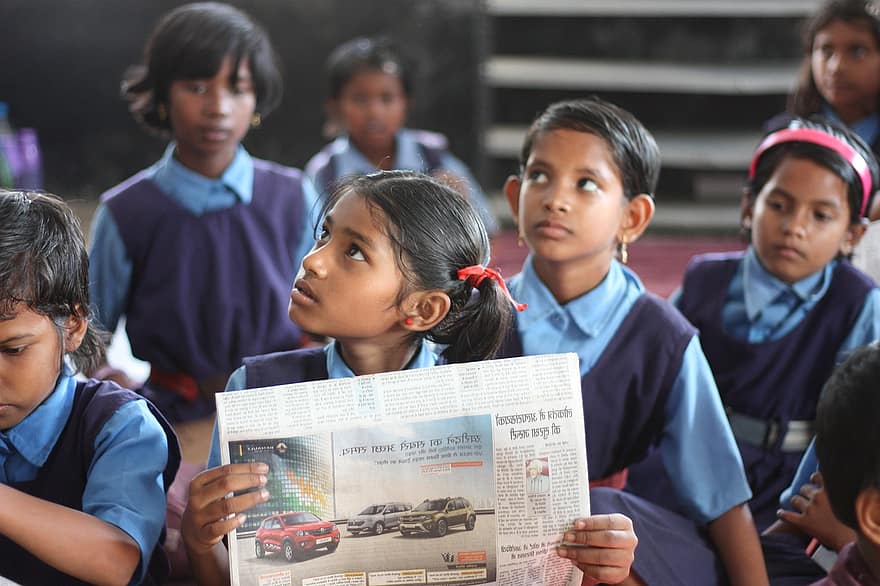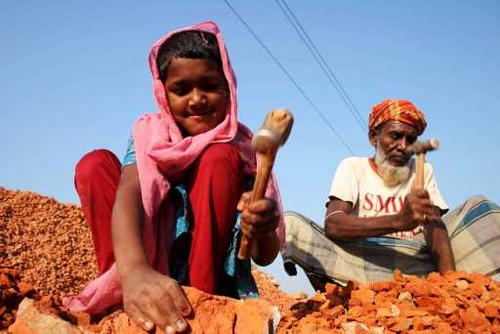By Srijal Srivastava

Children’s rights have always been an issue of contentious debate especially in the Indian context. The issue is not as objective as the factor of age might make it look like as it envelops in itself, the concept of a child-friendly justice system, the role of multiple actors, and deciding the child’s right to participation in various tasks. Further, the urgency of the need to understand children’s rights has amplified due to the COVID-19 crisis. The pandemic itself has put significant pressure on the children of Migrant Workers who are being subjected to physical exertion, malnourishment, and psychological pressure. As per a UN policy brief regarding the Impact of COVID-19 on children, they are not the face of this pandemic, but rather at a big risk of being its victims.
Child rights came into being despite the presence of Human rights due to special needs that need to be fulfilled for the right development of the children and to make them autonomous individuals. Classical texts like ‘Manu’ placed children at the bottom of the social order along with old, sick, newly married, and pregnant women. Children were to be taken care of, but it is evident that the identity of women came into being only after marriage. Traditional concepts of child rearing include both punishment and love for teaching discipline. Children are often seen as a security for old- age and in certain Indian contexts, are subjected to utilitarian attitudes at the cost of their own well-being and personal choice. The availability of opportunities is also heavily dominated by the caste and class that is imposed on these children which again depends on their gender.
As per the Report of the Working Group on Child Rights for the 12th five year plan (2012-2017), 40% of children in India are facing abuse, lack and absence of family support, and civil unrest. The Indian constitution guarantees certain rights to those under the age of eighteen. India ratified the Convention on the Rights of the Child in 1992. Despite the presence of Laws and Policies like National Plan of Action for Children, National Child Labour Policy, National ECCE policy, POCSO and PWD act, there are severe deficits in their implementation.

Female Genital Mutilation is practised in parts of Gujarat, Maharashtra, Rajasthan, Madhya Pradesh, and Kerala, and it violates the Convention on the Rights of the Child .The secrecy of the practice over the years has led to a lack of documentation and provision of help to the affected. The reasons behind it were related to initiation and controlling ‘sexual desires’ among females. This has led to severe psychological and physical pain for girls. The pandemic in itself can aggravate these activities that violate a child’s right to her life. The number of children being married off in these dire times is likely to rise due to “financial pressure” on the parents.
Children can be both directly and indirectly affected by labour laws that concern their parents also. The Working Group of Women in Value Chains brought to light the impact on children due to the relaxation of labour laws to deal with the downfall of the economy during the pandemic. Parents who will be expected to work for longer hours will carry their children along, bringing them into an exploitative loop as well.
The internet too has the potential to both violate and protect children’s rights. The ever growing unstructured space on the internet is giving way to dodge laws regarding child pornography and is also being used by the paedophile community to validate their actions. Dealing with non-photographic and photographic content online that encourages sexual exploitation of children will require work at three stages: creating awareness among teenagers and kids about the illegal nature of such activities, reporting such content, and getting to the culprits to prevent further violation of privacy and sexual exploitation. As per the Global Threat Assessment by We Protect Global Alliance, 750,000 individuals are estimated to be looking for children to connect with for sexual purposes online across the globe, which affects India too. According to India Child Protection Fund, there has been a rise of 95% in child pornography consumption since the lockdown started.
Quick and effective delivery of justice to those affected by the violation of children’s rights has been a thorny issue and will be more so considering the ongoing situation. Help mechanisms like Fast Track Courts that were set up to deal with cases revolving around Protection of Children from Sexual Offences (POCSO) Act have not been successful due to a lack of victim support services and witness protection measures. Non Governmental Organizations can play a significant role in consultation and connected efforts with governmental organizations. As per a child rights body, CRY, the number of children in agricultural and other hazardous occupations may see a sharp rise in the pandemic’s aftermath.
The voices of children are often suppressed, and their lives often manipulated. Child poverty debates are swamped with a need to increase the remuneration for the family and children are treated like objects who bear the brunt of the consequences. Will these kids ever get a chance to be who they truly want to be?

